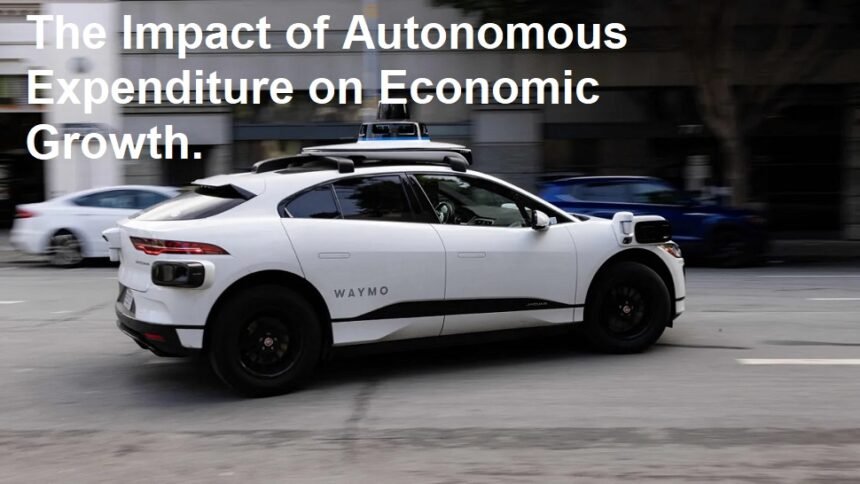What is Autonomous Expenditure?
Autonomous Expenditure is a basic concept in economics that refers to spending that occurs independently of changes in income or other economic factors. This spending is not influenced by factors such as consumer demand or economic conditions. They are considered self-determined and are usually driven by factors such as government spending, investment, and exports. In Indonesian terms we know this as autonomous expenditure. Understanding autonomous spending is critical to analyzing and predicting economic trends and can provide valuable insight into the health and stability of a country’s economy.
Autonomous spending plays an important role in the economy by providing stability and driving economic growth. Autonomous spending does not depend on changes in income or other economic factors, making it a reliable source of spending. Government spending, for example, is a key component of autonomous spending and can stimulate economic activity during times of recession or economic downturn. Investments in infrastructure and capital goods also contribute to autonomous spending, as they create jobs and stimulate economic growth. In addition, exports play an important role in autonomous expenditure, because they generate income and contribute to a country’s economic performance.
There are several types of autonomous expenditure that contribute to economic growth, namely:
1. Government spending, which includes investments in infrastructure, education, health and defense. Government spending is often used as a tool to stimulate the economy during times of recession or economic downturn.
2. Consumer spending, namely the money that individuals and households spend on goods and services. Consumer spending accounts for the majority of economic activity in most countries, as it drives demand for products and services.
3. Corporate spending, refers to investments made by companies to expand their operations or increase their productivity. Companies can invest in new equipment, research and product development.
4. Investment in capital goods, such as machinery, equipment and technology. This type of investment creates jobs and drives economic growth by increasing productivity. Capital goods investments can also lead to increased innovation and the development of new products and services. This type of spending is important for the business sector to remain competitive in the global economy.
5. Exports, that is, when a country exports goods and services, it generates income and contributes to its overall economic performance. Exports can also help create jobs, increase wages and stimulate investment. They can also provide foreign exchange earnings that can be used to finance imports or pay for services from other countries. Additionally, exports can help a country diversify its economy by providing access to global markets.
Understanding the various factors that influence autonomous spending is critical for policymakers and economists to make informed decisions and manage the economy effectively. By promoting policies that encourage investment, spending, and exports, policymakers can help stimulate economic growth and create more prosperous societies.
There are several factors that can influence autonomous expenditure, namely:
1. The overall state of the economy. During times of economic growth and stability, business sectors and individuals are more likely to invest in capital goods and increase their spending. On the other hand, during times of recession or economic uncertainty, autonomous spending may decrease as businesses and individuals become more careful with their spending.
2. Government policies and regulations play an important role in influencing autonomous expenditure. For example, tax incentives and subsidies can encourage the business sector to invest in capital goods and stimulate economic growth. Likewise, government spending can have a direct impact on autonomous spending, as increased investment in infrastructure or health services can create the effect of increasing spending and economic activity.
3. Global economic factors, such as exchange rates and international trade agreements, can influence autonomous expenditure. Changes in exchange rates can affect the competitiveness of exports, which in turn can affect the level of autonomous expenditure generated through exports. Additionally, trade agreements can open new markets and opportunities for domestic business sectors, leading to increased autonomous spending.
The Impact of Autonomous Expenditure on Economic Growth.
Autonomous expenditure plays an important role in driving economic growth. When businesses and individuals increase their spending on capital goods, it stimulates economic activity and creates effects throughout the economy. This increased spending leads to job creation, increased production, and higher levels of income and consumption.
The impact of autonomous shopping on economic growth can be seen in various sectors. For example, increased investment in infrastructure can lead to improved transportation networks, which in turn can attract business and stimulate economic development in a region. Likewise, investments in health care can lead to improved access to medical services, better health outcomes, and increased productivity.
Autonomous expenditure also has a multiplier effect on the economy. When businesses invest in capital goods, it creates demand for goods and services from other businesses, which results in increased production and employment. This increasing income and consumption then drives economic growth.
However, it should be noted that the impact of autonomous expenditure on economic growth may vary depending on the overall state of the economy and other external factors. During times of recession or economic uncertainty, business sectors and individuals are more careful with their spending, leading to a decrease in autonomous spending. Likewise, global economic factors such as exchange rates and trade agreements can also influence the level of autonomous spending generated through exports.
Understanding the impact of autonomous spending on economic growth is critical for policymakers and economists to develop effective strategies to promote economic development and promote economic development. By creating policies that encourage investment, spending and exports, policymakers can create economic growth.












